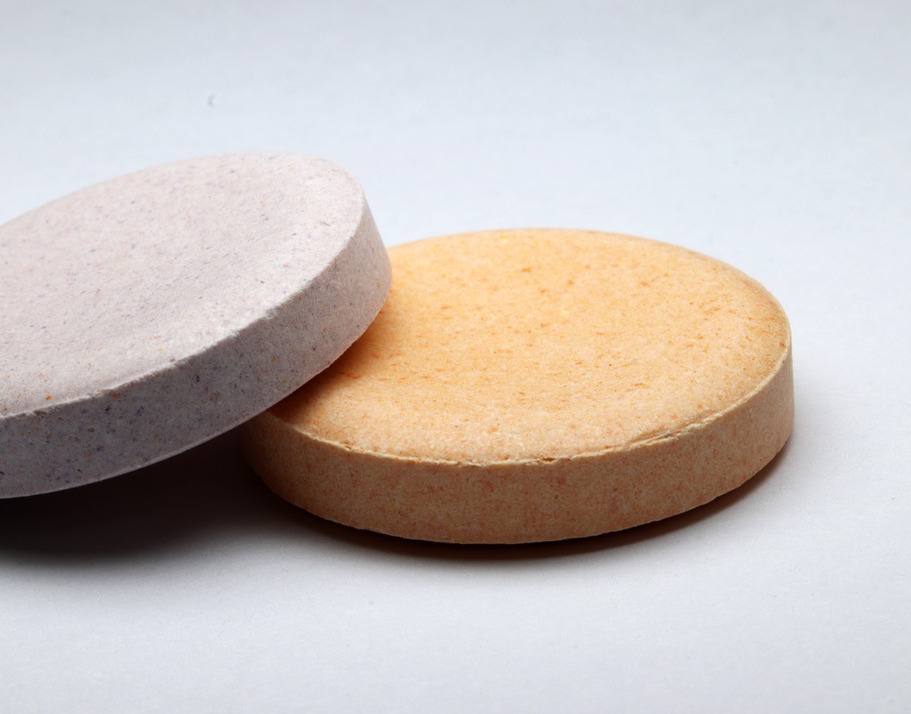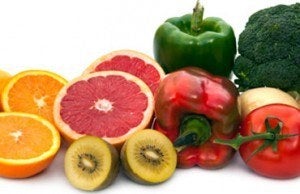Is a glass of OJ or vitamin C tablets your go-to when the sniffles come? Loading up on this vitamin was a practice spurred by Linus Pauling in the 1970s, a double Nobel laureate and self-proclaimed champion of vitamin C who promoted daily megadoses (the amount in 12 to 24 oranges) as a way to prevent colds and some chronic diseases.
Vitamin C, or ascorbic acid, is a water-soluble vitamin. This means that it dissolves in water and is delivered to the body’s tissues but is not well stored, so it must be taken daily through food or supplements. Even before its discovery in 1932, nutrition experts recognized that something in citrus fruits could prevent scurvy, a disease that killed as many as two million sailors between 1500 and 1800. [1]
Vitamin C plays a role in controlling infections and healing wounds, and is a powerful antioxidant that can neutralize harmful free radicals. It is needed to make collagen, a fibrous protein in connective tissue that is weaved throughout various systems in the body: nervous, immune, bone, cartilage, blood, and others. The vitamin helps make several hormones and chemical messengers used in the brain and nerves. [2]
While megadosing on this vitamin is not uncommon, how much is an optimum amount needed to keep you healthy, and could taking too much be counterproductive?
Recommended Amounts
- RDA: The Recommended Dietary Allowance for adults 19 years and older is 90 mg daily for men and 75 mg for women. For pregnancy and lactation, the amount increases to 85 mg and 120 mg daily, respectively. Smoking can deplete vitamin C levels in the body, so an additional 35 mg beyond the RDA is suggested for smokers.
- UL: The Tolerable Upper Intake Level is the maximum daily intake unlikely to cause harmful effects on health. The UL for vitamin C is 2000 mg daily; taking beyond this amount may promote gastrointestinal distress and diarrhea. Only in specific scenarios, such as under medical supervision or in controlled clinical trials, amounts higher than the UL are sometimes used. [2]

Vitamin C absorption and megadosing
Absorption does not differ if obtaining the vitamin from food or supplements. Vitamin C is sometimes given as an injection into a vein (intravenous) so higher amounts can directly enter the bloodstream. This is usually only seen in medically monitored settings, such as to improve the quality of life in those with advanced stage cancers or in controlled clinical studies. Though clinical trials have not shown high-dose intravenous vitamin C to produce negative side effects, it should be administered only with close monitoring and avoided in those with kidney disease and hereditary conditions like hemochromatosis and glucose 6-phosphate dehydrogenase deficiency.
Vitamin C is involved with numerous metabolic reactions in the body, and obtaining the RDA or slightly higher may be protective against certain disease states. However, a health benefit of taking larger amounts has not been found in people who are generally healthy and well-nourished. Cell studies have shown that at very high concentrations, vitamin C can switch roles and act as a tissue-damaging pro-oxidant instead of an antioxidant. [2,3] Its effects in humans at very high doses well beyond the RDA are unclear, and can lead to increased risk of kidney stones and digestive upset.
Vitamin C and Health
There is interest in the antioxidant role of vitamin C, as research has found the vitamin to neutralize free radical molecules, which in excess can damage cells. Vitamin C is also involved in the body’s immune system by stimulating the activity of white blood cells. Does this translate to protection from certain diseases?
Food Sources
Fruits and vegetables are the best sources of this vitamin.
- Citrus (oranges, kiwi, lemon, grapefruit)
- Bell peppers
- Strawberries
- Tomatoes
- Cruciferous vegetables (broccoli, Brussels sprouts, cabbage, cauliflower)
- White potatoes
Signs of Deficiency
Vitamin C deficiency is rare in developed countries but may occur with a limited diet that provides less than 10 mg daily for one month or longer. In developed countries, situations at greatest risk for deficiency include eating a diet restricted in fruits and vegetables, smoking or long-term exposure to secondhand smoke, and drug and alcohol abuse. The following are the most common signs of a deficiency.
- Scurvy, the hallmark disease of severe vitamin C deficiency, displays symptoms resulting from loss of collagen that weakens connective tissues:
- Skin spots caused by bleeding and bruising from broken blood vessels
- Swelling or bleeding of gums, and eventual loss of teeth
- Hair loss
- Delayed healing of skin wounds
- Fatigue, malaise
- Iron-deficiency anemia due to decreased absorption of non-heme iron
Did You Know?
- Vitamin C improves the absorption of non-heme iron, the type of iron found in plant foods such as leafy greens. Drinking a small glass of 100% fruit juice or including a vitamin-C-rich food with meals can help boost iron absorption.
- Vitamin C can be destroyed by heat and light. High-heat cooking temperatures or prolonged cook times can break down the vitamin. Because it is water-soluble, the vitamin can also seep into cooking liquid and be lost if the liquids are not eaten. Quick heating methods or using as little water as possible when cooking, such as stir-frying or blanching, can preserve the vitamin. Foods at peak ripeness eaten raw contain the most vitamin C.
- Vitamin C serums and skin creams are popular because normal skin typically contains high concentrations of vitamin C, which stimulates collagen production and protects against damage from UV sunlight. However, research suggests that topical vitamin C may have limited benefits, as very little can penetrate the skin’s surface and will not produce additional benefit if a person obtains adequate vitamin C through food or supplements. [7]
Related
Last reviewed March 2023
Terms of Use
The contents of this website are for educational purposes and are not intended to offer personal medical advice. You should seek the advice of your physician or other qualified health provider with any questions you may have regarding a medical condition. Never disregard professional medical advice or delay in seeking it because of something you have read on this website. The Nutrition Source does not recommend or endorse any products.
